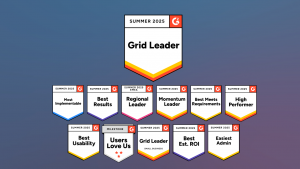Since a lot of shopping starts with a search, e-commerce brands must invest in SEO for e-commerce product pages or risk becoming lost online, losing potential customers, and reducing revenue. By taking advantage of product page search opportunities, your online store can generate more transactions and increase profits.
5 Tips on Improving SEO for E-Commerce Product Pages
When it comes to strengthening product page SEO, it may be a long-term investment, but it’s one of the most efficient ways to drive relevant traffic to your online store.
Some benefits of investing in SEO for e-commerce product pages are:
- Ranking product pages higher for popular keywords from valuable visitors;
- Strengthening product search visibility and brand awareness;
- Driving more relevant organic traffic to product pages;
- Receiving more referral traffic that converts into customers more;
- Maximizing Google crawl budget to improve indexing.
Below we’ll share 5 e-commerce product page best practices you should implement and why they benefit your bottom line.
1. Write Unique SEO Product Descriptions and Titles for Better Search Visibility
First on our list of product page best practices for e-commerce SEO are SEO product descriptions. An SEO product description is more than a few product details. It requires strategic product content optimization to rank higher for search queries that drive potential customers to your product pages when they use those keywords to shop online.
SEO for product descriptions and titles should be unique and not have duplicate content. If your product page copy has duplicate content, it can make it harder for Google to crawl it and prolong indexing for other product pages too.
If your online store isn’t indexed by Google or takes a long time, it’s virtually invisible. For this reason, online stores shouldn’t use the manufacturer’s website descriptions and write unique SEO product descriptions to avoid duplicate content and indexing issues.
If your product pages aren’t getting crawled/indexing, try adding internal links to your pages from other pages of your website such as category pages, menu navigation, and blog articles.
Some ways to improve SEO product descriptions and titles for e-commerce brands are:
- Keep your target audience in mind — showcase how the product exactly solves your buyer persona’s challenges and issues;
- Avoid vague product details – thoroughly explain product benefits and features, add product FAQs, and use comparison product listings for upselling and cross-selling opportunities.
SEO product descriptions and titles should meet where your visitors are in their buyer’s journey.
Below we’ll explain some common keyword mistakes to avoid in SEO for e-commerce product pages to ensure you’re targeting the right ones.
2. Use the Right Keywords and Search Intent to Attract the Right Audience
E-commerce brands mistakenly don’t do keyword optimization for product pages correctly or at all. Keyword optimization for e-commerce product page SEO is more than stuffing the highest volume keywords to product descriptions and titles.
Product page keyword optimization requires strategic planning to ensure the keywords you’re targeting have the correct search intent and provide the best SEO opportunities. The easiest way to know a keyword’s search intent is to enter it into a search engine and look at the search results.
For example, a keyword like “best athletic shorts” would generate blog search results, while “athletic shorts” would generate product page search results. If the keyword you’re targeting for an SEO product description isn’t generating product page search results, this is a sign that you have the wrong search intent.
If your online store optimized a product page with a keyword intended for blog content, it could increase its bounce rate and lower average session duration because that’s not what users are looking for with that search query.
In this case, “best athletic shorts” would be intended for users searching for informational blog content, not potential customers shopping for products. Although this keyword applies to a product, the search intent is for users researching athletic short options, general information, and the best features to look for first before buying.
Some ways to improve keywords research and optimization for e-commerce SEO product descriptions are:
- Target keywords with the right search intent that generates product pages in search results;
- Look for high-volume keywords with the lowest keyword difficulty when possible;
- Use unique keywords for each product and category page to prevent duplicate content.
Ensuring that the keywords used to optimize your product page copy are the right search intent will attract only relevant traffic and influence the right audience to buy.
3. Add Structured Data Markup to Generate Rich Results from Google
How to optimize an e-commerce product page for SEO… without structured data markup? This is one of the most critical components of on-page SEO for e-commerce. It helps Google understand and categorize product page content more appealingly to encourage more user interaction — also known as rich results.
Structured data markup helps produce rich results, which is essential for e-commerce product SEO. It generates special search results features that can make your online store stand out in the SERPs, such as product schema markup.
For example, if your online store sells many types of shoes, product schema markup gives Google more information about your product pages, like shoe size, shoe type, brand, and color. This helps ensure that Google crawls all product pages correctly and produces rich snippets.
According to Search Engine Journal, users click on rich results 58% of the time versus non-rich results at 41%. Rich results can enhance the shopping experience at your online store by displaying product ratings, pricing, product image, and availability within the SERPs — instead of users clicking through to your website to learn more.
Structured data markup is essential in SEO for e-commerce product pages because it makes it easier for Google to understand and showcase your products better for potential customers.
Without structured data markup, Google couldn’t tell the difference between the shoe products you sell. By providing the standardized language Google requires to generate rich snippets for your product pages, it can help them rank higher and display details in the SERPs for more specific search queries, which can increase search visibility and transactions.
Some structured data types that can apply to SEO for e-commerce product pages are:
- Breadcrumb — a trail of website pages in the website header when product browsing and shopping for simpler site navigation;
- FAQ — list of common product questions for better user experience;
- Image Metadata — large product imagery and related products for easier visual search;
- Product — product snippet, merchant listing experience, pricing, and availability for streamlined online shopping;
- Review snippet — average rating, number of reviews, and reviewer information to stand out from the competition in the SERPs;
- Sitelinks Search Box — sitewide product search without clicking into a website for easier search;
- Video — step-by-step product instructions for a better visual and learning experience.
Structured data markup is fundamental to e-commerce SEO for product pages. It can make your online store stand out in the SERPs, make it easier for potential customers to shop online, and streamline the shopping experience. Consumers nowadays don’t want a difficult online shopping experience, and it can be difficult for e-commerce brands to stand out in a competitive digital market.
Investing in e-commerce product SEO through structured data markup can increase search visibility and generate more revenue.
4. Create Clear Call-to-Actions to Guide Users Along their Buyer’s Journey
Next on our list of SEO product page best practices that e-commerce brands should utilize is displaying clear call-to-action (CTA) buttons. As an online store, you must be able to sell products successfully, and CTAs are the actions users must take to buy them. As an e-commerce SEO best practice for product pages, CTAs should be placed underneath the SEO product description.
Some ways to strengthen CTAs in SEO for e-commerce product pages are:
- Make add-to-cart buttons clearly visible on mobile and desktop — essential for easy online store user experience, lowering bounce rate, improving click-through rate (CTR) and conversions;
- Add multiple CTAs — consider add to wishlists, one-page/express checkouts, save payment methods, and address autocomplete to guide users along in their buyer’s journey easily from product page to purchase;
- Create valuable CTAs for your target audience – A/B test multiple button locations and styles to see which resonates best with your shoppers.
5. Perform a Website Audit to Solve Technical SEO Issues in Product Pages
The last e-commerce SEO best practice for product pages is a website audit to uncover any technical SEO issues. A technical SEO audit is critical to successful e-commerce website design because it monitors your SEO online shop’s technical performance.
Also known as off-page optimization, e-commerce brands must invest in technical SEO as part of their product SEO strategy for a seamless shopping experience and strong website performance. Online stores can lose potential customers from off-page SEO issues, like slow page speed and poor mobile responsive design. By conducting a website audit, you can find and fix these technical issues to strengthen your SEO for e-commerce product pages.
Some ways to improve e-commerce product page SEO with off-page optimization are:
- Make your online store desktop and mobile-friendly;
- Analyze and improve your website’s load speed time with a tool like Google’s PageSpeed Insights;
- Add breadcrumbs for simpler site navigation from product page to checkout;
- Get an SSL certificate to secure your website (HTTPS);
- Create and submit an XML sitemap to make it easier for Google to crawl and index your product pages.
Regular website audits are critical to any e-commerce marketing strategy to ensure your SEO for products is performing as it should.
Now that you have some tips on improving SEO for e-commerce product pages, it’s time to get started with SEO for your online store!

Tanner Scott
Founder & CEO – Ranskey Digital Marketing
Tanner is the founder and CEO of Ranksey Digital Marketing, a digital agency that specializes in helping e-commerce brands scale by optimizing customer acquisition costs and maximizing customer lifetime value.















